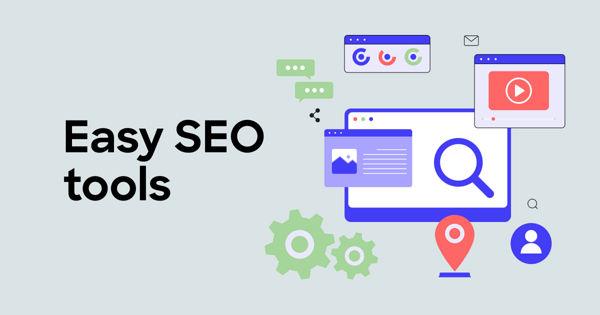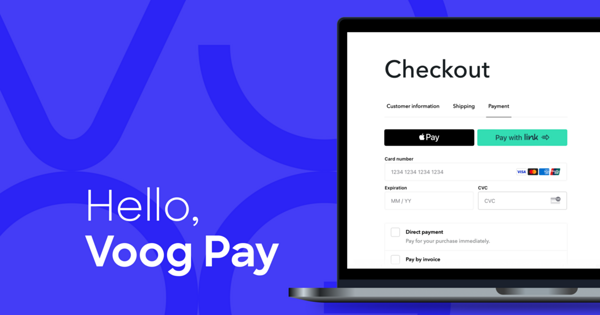Let’s start by saying that reducing costs and raising prices can only go so far when you want to boost your store’s revenue.
Why?
On the one hand, you risk sacrificing your operations. On the other, you may lose customers.
Indeed, both options could immediately earn you a few extra bucks, but you’re setting yourself up for failure in the long run.
The better way to increase your eCommerce sales is to go with a more strategic approach.
What does that even mean?
It means improving the fundamentals your business is built on so you can start seeing steady and healthy growth in total sales and revenue.
And all the strategies listed in this article will allow you to achieve that.
So read on!
Why you need an eCommerce strategy to increase sales
Considering that 2.71 billion people around the globe are making online purchases and every second YouTube video on eCommerce says: “Here's how I turned $500 into $100M:”It’s easy for one to think that all you need to turn your eCommerce business profitable is to find the right product and run some Facebook ads.
ERRR. Wrong.
Both of these things will play a major role in your success, but you need more than that. You need a strategy.
And here’s what it takes to build one:
Market your products to the right buyers
A systematic approach to gain attention, trust, and loyalty
Improve operational efficiency and allocate resources where it’s most beneficial
Let’s go through each one of these points.
Marketing your products to anyone and everyone is a good strategy only during the testing phase. You want to show your product to as many people as possible to find out what percentage of them want to buy it. Once you validate that, you need to narrow your audience to the ones with the highest purchasing intent.
🫤 If your marketing efforts are misaligned with your customer base, your product will not resonate with them, and they will not buy it.
Next, having a systematic approach to your business means that from the very first moment they discover your product (via ads, search engine optimization or SEO, etc.) to post-purchase follow-up, every step should be part of a cohesive plan.
💰Turning prospects into loyal customers will bring repeat purchases, word-of-mouth marketing, and lower customer acquisition costs.
Lastly, a strategy helps you focus on what’s working and cut back on what isn’t. By analyzing metrics like conversion rates, customer acquisition costs, and average order values, you can make informed decisions about where to invest your time, money, and resources.
🛠 This could mean optimizing your website for a smoother shopping experience, improving product pages, or allocating more budget to high-performing ad campaigns.
The key approaches to increasing your sales
There are three ways you can increase your sales:
Increase your customer base
Encourage customers to spend more
Make existing customers buy more frequently
Increase your customer base
More customers equals more sales. Simple yet so hard to achieve. If you aren’t selling an innovative product, you probably have competitors. So, to increase your chances of turning visitors into customers, you need to:
- Target the right people with your marketing campaigns
- Provide visitors with a smooth user experience (UX) and checkout process
Invest in SEO to ensure your website is taking the top position on search engines
Encourage customers to spend more
Once you attract a high-quality prospect, you need to increase their average order value (AOV) as much as possible.💡Key term: Average order value (AOV) The average amount spent each time a customer places an order. |
Increasing the AOV allows you to maximize revenue per transaction without necessarily needing to attract more customers. It also improves the efficiency of each sale, as your marketing and operational costs remain constant while revenue per order grows.
The following tactics can encourage your customers to spend more:
Upselling
Cross-selling
Offering bundle deals
Adding limited-time discounts on complementary products
Make existing customers buy more frequently
Going back to having a systematic approach to how you do business, we said that turning your prospects into loyal customers has the highest return on investment (ROI). Furthermore, retaining an existing customer is far cheaper than acquiring a new one.
So, once you build that trust, encourage existing customers to return and purchase more from your store.
You can achieve that with:
Special offers
Tailored email outreach
Personalized marketing campaigns
Reminders about products they’ve previously shown interest in
Now, let’s see how you can implement these best practices….
12 tips to improve your eCommerce sales
Implement these strategies and watch your sales skyrocket.1. Optimize your product pages for better rankings
The average eCommerce conversion rate is between 2.5% and 3%. However,eCommerce websites that rank on Google’s first page have an average conversion rate of 10.18%.
So how can you guarantee your pages are ranking among the top results?
In a nutshell, you need to use relevant keywords in your product descriptions, image alt text, page URLs, headings, and copy.
Here’s how GILI Sports does it:
You can easily guess that the main keyword they are trying to rank for is “paddle board.” That said, you can find the search term all over their product page.
However, we need to make one BIG disclaimer here:
Do not fall for black SEO practices like keyword stuffing, which involves using your main keyword 20 times in a 100-word product description. Search engines consider this a bad practice and will penalize you.
💡Key term: Keyword stuffing Keyword stuffing is the practice of overloading a webpage with a large number of keywords in an attempt to manipulate search engine rankings. This can include placing search terms unnaturally within content or meta tags or even hiding them in the background. |
You can easily build a list of keywords your prospects are searching for with tools like Semrush, Ahrefs, and Keyword Planner.
2. Focus on mobile UX
The eCommerce industry is thriving because it’s convenient. Users can purchase products from all over the world with a few clicks right from their laptop, tablet, or smartphone.
However, online store owners tend to forget this and neglect their websites’ mobile experience.
Considering that 68.98% of the global web traffic comes from mobile, that would be the biggest mistake you can make.
Image source: similarweb.com
But optimizing your store for mobile devices isn’t only about the responsive design. You need to evaluate the entire user journey and ensure there is zero friction. That said, you can:
Introduce auto-fill forms
Simplify the checkout process
- Add mobile-friendly payment options like digital wallets
Basically, anything that will allow the user to get from your home page to your thank you page in the fastest way possible!
The difference between Lululemon’s desktop and mobile version of their site
3. Display customer reviews in prominent places
A study conducted in 2022 showed that websites that display customer reviews/testimonials see a massive increase in conversion rates.
For instance, online clothing stores saw conversion rates increase by 23%. Sites selling home appliances and electronics that display ratings and reviews increased conversion rates by 38%.
Source: statista.com
Simply put, people trust other people. So, as soon as you get 3-4 good reviews, display them on critical touch points like your home page, product pages, emails, and wherever you think they would help you convert.
You now may be wondering:
What’s the best way to gather reviews?
Encourage customers to leave reviews by sending follow-up emails after purchase or offering small incentives like discounts on future orders. You can also integrate review prompts directly on the order confirmation page.
Rothys displays reviews on its product pages, allowing prospects to filter the feedback based on product features.
Whatever strategy you choose, make sure to gather reviews shortly after the product is delivered while the customer's experience is fresh in their mind.
🔥Pro tip: Strive for an imperfect rating Consumers get suspicious when they see a product with a 5/5 rating. They know a bad review can happen and are even looking for it as it can help them evaluate the product better. So don’t be afraid of a few bad reviews. They can help in the long run. |
4. Use video product demonstrations
Your whole business strategy should revolve around reducing friction. And leveraging video product demos is one of the best ways to eliminate second-guessing.
Video product demonstrations are a highly effective way to showcase your products and engage potential buyers. By giving customers a clear visual of how a product works, its features, and its benefits, you help them make more informed purchasing decisions.
Videos build trust, show products in real-world scenarios, and answer common customer questions before they even arise.
Beyond using video on your website, video ads are incredibly effective for driving new leads and conversions. Research shows that video ads have higher engagement rates and conversion potential than static images, especially on platforms like Facebook, Instagram, and YouTube.
“Marketers achieved a 34% higher conversion rate by including video content in their marketing campaigns.” — G2
Allbirds’ Facebook video ad
5. Showcase your best-selling items
Your best-selling items are popular for a reason, so why not use that to your advantage?
Highlighting these products on your homepage or adding them in key areas of your website can lead to easy sales. When people see that a product is in high demand, it creates a sense of credibility and makes them more likely to buy.
Adding labels like “Best Seller” or “Customer Favorite” helps these items stand out even more.
You can even put them in a separate category so consumers can find them easily. Here’s how Chubbies did it:
Again, this strategy doesn’t apply only to your website — feature your top-selling products in marketing emails, social media posts, and ads.
People are naturally drawn to what others are buying, and seeing these items showcased prominently gives them confidence that they’re making the right choice. Plus, it can create a sense of urgency, especially if paired with messages like “Limited Stock” or “Popular Item.”
6. Simplify the checkout process
What’s the checkout process in a brick-and-mortar store?
You pick the item, go to the checkout, and pay.
You must strive for the same level of simplicity in your store’s online checkout process. Otherwise, you will lose customers.
Start by minimizing the number of steps it takes to check out:
Simplify forms by only asking for essential information
Offer a guest checkout option so customers aren’t forced to create an account
Speed up the process with autofill features, saved payment details, and one-click and express checkout options
Lego offers an express checkout option by taking all order details directly from the payment provider
Also, offer multiple payment options, from credit cards to digital wallets like PayPal and Apple Pay, so customers can choose what’s most convenient for them. The easier and more intuitive your checkout process is, the fewer chances you’ll give customers to second-guess their purchase.
7. Add a live chat to your store
A big part of the UX you provide is customer service.
Yes, we understand that the perfect scenario for you would be:
A prospect lands on their site
Finds all the info they need
Purchase
However, the reality is a bit different. As informative as your pages may be, customers always have questions.
This is where live chat comes into play.
Adding a live chat feature gives customers real-time support, helping them make decisions faster and more confidently.
Going back to comparing brick-and-mortar and eCommerce, live chat is a great way to bridge the gap between in-store and online shopping.
It offers that personalized, instant assistance customers would get in a physical store, right from the comfort of their device. Whether it's a quick product recommendation or answering a shipping question, having a support team ready to help can be the difference between a sale and an abandoned cart.
Kith’s live chat support
8. Enable in-app shopping
Shopping directly within apps like Facebook, TikTok, and Instagram is changing the game for eCommerce. Instead of sending customers to your website, you can let them discover and buy your products without ever leaving the social media app.
It’s all about making the shopping experience as easy and seamless as possible—no extra clicks, no waiting for pages to load.
When people see something they like in your social media post, story, or video, they can purchase it right there on the spot. This convenience can seriously cut down on cart abandonment and boost sales, as you're meeting customers exactly where they already are.
Here’s how to enable in-app shopping on:
9. Recover abandoned carts with emails
There are a million reasons why customers add items to their cart but leave without checking out. And none of them are under your control.
Imagine this:
A customer decides to browse your store on their way to work. They added a few items and are now ready to complete their order. Suddenly, they realize they must hop off the train. They decide to order the products at the office. However, they get bombarded with myriads of tasks during the day and forget.
Nothing you can do about it. Life happens.
But here’s the good news — sending them timely, personalized emails is a super-effective way to bring those customers back and recover potential sales.
Now, this is all under your control.
A well-crafted abandoned cart email reminds shoppers of what they left behind, often nudging them with a friendly message like, “Looks like you forgot something!”
Image source: reallygoodemails.com
Furthermore, add a little incentive, like free shipping or a discount code, and you’ll increase the chances they’ll come back and complete their purchase.
🔥 Pro tip: Timing is key Send the first email within a few hours, and follow up a day or two later if they still haven’t acted. |
These emails can also be a great opportunity to showcase product reviews or even suggest related items to sweeten the deal. It’s all about keeping your brand on their radar and making it as easy as possible for them to return and finish what they started.
10. Offer fast, free shipping at a certain price point
If you’re debating whether to add free shipping to your store, here are a couple of data-backed reasons why to do it
Free shipping has led to a 90% increase in eCommerce orders.
Free shipping orders have a 30% higher AOV.
Businesses that offer free shipping have a 20% higher conversion rate than those that do not.
Image source: contimod.com
In other words, today’s customers do not expect online stores to offer free shipping — they demand it.
If you’re uncomfortable offering such an option across the board, you can unlock it only when customers hit a specific price point, like $50 or $100.
It’s a win-win situation: not only does this make your customers feel like they’re getting a deal, but it also helps boost your AOV.
Gymshark offers free standard shipping for orders over $75
11. Recommend complementary products
Have you noticed how supermarkets showcase various products right on their checkouts? They are not something customers intentionally come in to buy but often add to their cart right before they leave.
You can apply the same strategy to your online store by adding a “You might also like…” section to your checkout, offering complementary products.
Whether it's suggesting matching accessories, related items, or products that enhance what’s already in the cart, you’re helping customers discover more of what they didn’t know they needed.
It’s like providing them with a friendly salesperson who knows what goes with what. For example, if someone’s buying a camera, why not suggest a memory card or a carrying case?
They might not purchase it, but what’s there to lose offering it?
12. Get heatmaps running
You probably know that, but running an eCommerce store isn’t a set-it-and-forget-it type of business.
You must constantly tweak things to increase your AOV, total sales, and revenue.
If you really want to understand how customers interact with your site, getting heatmaps up and running is a game-changer. Heatmaps show you where visitors are clicking, scrolling, and spending the most time on your pages.
Image source: hotjar.com
With this insight, you can figure out which areas of your site are working well and which might need some tweaking.
For example, if you notice that a lot of people are clicking on a specific product image or button, you know it’s doing its job. On the flip side, if key elements are being ignored, it’s a sign to make some adjustments — maybe move things around or make them more noticeable.
You can use tools like Hotjar and Mouseflow, which will automatically record your visitors' interactions and share the insights with you.
FAQs
How can I improve my eCommerce margin?
Optimizing supply chain costs, negotiating better deals with suppliers, reducing shipping expenses, and streamlining operational efficiency can improve your eCommerce margin. Additionally, increasing your average order value through upselling and cross-selling can boost margins.
How do I make my eCommerce store stand out?
Differentiate your eCommerce store by offering a unique value proposition, creating a seamless user experience, and providing excellent customer service. Focus on branding, personalized marketing, and customer reviews to build trust and loyalty.
Where is eCommerce growing fastest?
eCommerce is growing fastest in markets such as Mexico, India, Malaysia, Philippines, and China. The widespread adoption of mobile technology and digital payments is driving growth in these regions.
How do I increase my eCommerce website reach?
To increase your website’s reach, invest in SEO, content marketing, and social media advertising. Collaborate with influencers, optimize for mobile, and leverage paid ads like Google Shopping or Facebook Ads to drive more traffic.
---
About the author:
Niko Kaleev is a Senior Content Writer at NitroPack, the leading all-in-one web performance optimization platform. With over 7 years of tech industry experience, he excels at transforming complex topics into engaging and accessible content. Explore his latest work on the NitroPack blog.





















